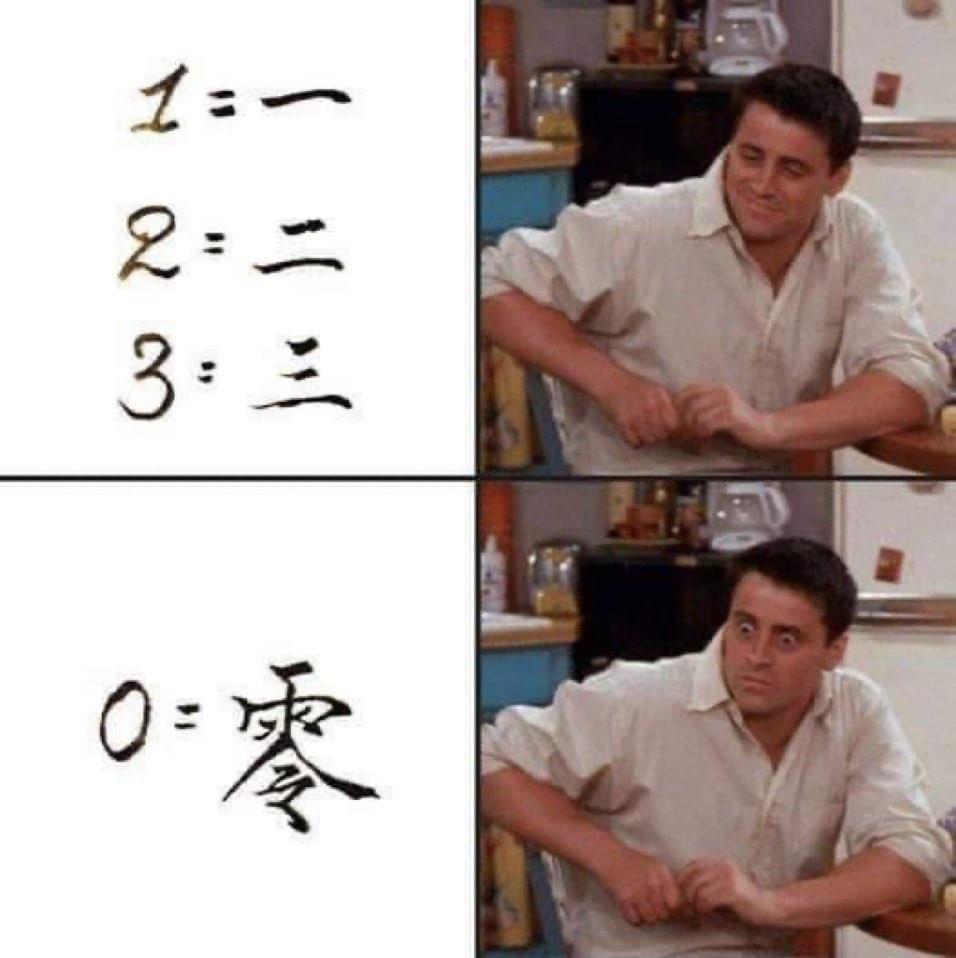this post was submitted on 29 Apr 2024
970 points (99.3% liked)
Memes
44907 readers
2640 users here now
Rules:
- Be civil and nice.
- Try not to excessively repost, as a rule of thumb, wait at least 2 months to do it if you have to.
founded 5 years ago
MODERATORS
you are viewing a single comment's thread
view the rest of the comments
view the rest of the comments

Japanese pronounces some numbers different depending on what you are counting. Is this the same for Chinese?
I think there are certain phrases found in different dialects of Chinese. In Cantonese, the formal way of reading twenty is 十二, but the colloquial term would be 廿.
Edit: Should be 二十
十二 not 二十?
Whoops! You got that right. Should be 二十
No, but whenever you have something that's countable (even if it's just 1), you have to do , so instead of "I have a ticket" or "we want 2 waters", you have to do "I have 1 ticket" or "I(plural) want 2 water".
There's a generic measure word, but I think it's seen as improper to use it.
Yea, Chinese people understand when you do that, but they first look at you with this confused look thinking 'he wants two chopstic pieces?' and then realize you have a vocabulary of a two-year-old.
Source:lived in China long enough to learn yo ask for things, but not long enough to learn the countable nouns.
A bit like confusing much and many or some and any, which I did a lot when I first learnt English.
Afaik, no. Japanese either uses 音読み onyomi = Chinese reading (literally "sound reading", 音 = sound, 読み = reading) and 訓読み Kunyomi = Japanese reading (訓 has multiple kanji meanings. I learned it as "instruction". Sites list the meanings as 訓 = instruction, Japanese character reading, explanation, read) for words that have kanji (Chinese characters). The original Chinese characters don't have a "Japanese reading" afaik. They are Chinese after all.
the number 2 is said "liǎng" more commonly; it's like saying "a couple" but more strictly. "èr" is used for counting or maths
Bro first of all, no one should ever freeze a gyro, second, will you please elaborate because that is 100% interesting
Basically certain words use a different counter, and it changes how you would say 1, 2, 3 etc. so there is a counter for big living things, small living things, flat things, round things, money etc. A lot of the numbers are similar with slight changes in pronunciation.
So instead of ichi for 1, it might be ippon, ittou, issoku etc. if you know it's a counter you can usually tell what the number is from the start of the word. Though there are exceptions like hitotsu, which is also one. Though if they use the "Chinese" characters you can know what it means when reading it without knowing how it's actually pronounced.